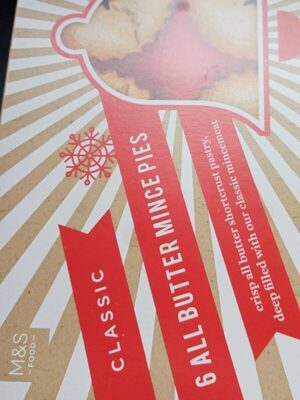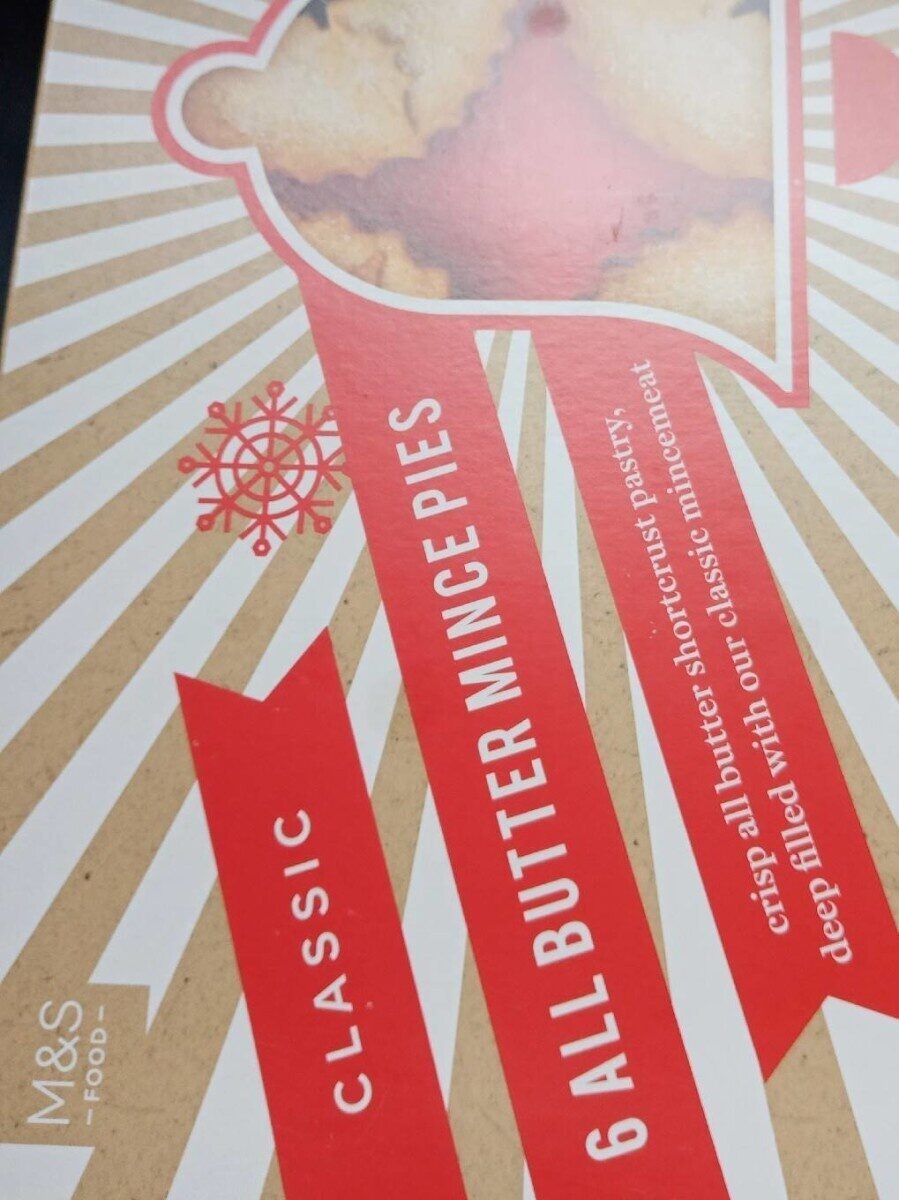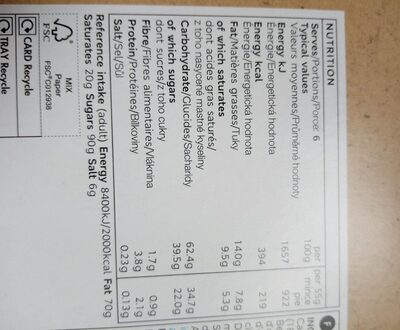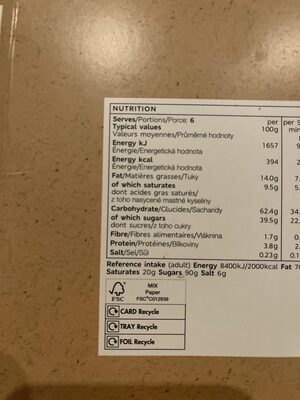Mincepies - M&S
Ambiguous barcode: This product has a Restricted Circulation Number barcode for products within a company. This means that different producers and stores can use the same barcode for different products.
×
This product page is not complete. You can help to complete it by editing it and adding more data from the photos we have, or by taking more photos using the app for Android or iPhone/iPad. Thank you!
×
Barcode: 00634526
Packaging: en:Card-box, en:Foil-wrapper, en:Pet-tray
Brands: M&S
Categories: en:Sweet pies, en:Pies
Labels, certifications, awards: en:Vegetarian
Traceability code: FSC-C012938
Stores: Marks & Spencer
Countries where sold: An Fhraing, An Rìoghachd Aonaichte
Matching with your preferences
Report a problem
Data sources
Product added on by kiliweb
Last edit of product page on by kiliweb.
Product page also edited by autorotate-bot, foodrepo, inf, openfoodfacts-contributors, packbot, rachael31, roboto-app, swipe-studio, tacinte, tacite-mass-editor, teolemon, vaporous, yuka.WUs4aUZyZ1E5dVF4bDg4RTJEM3R3ZGhLenB1elFVZVJPZllkSVE9PQ, yuka.sY2b0xO6T85zoF3NwEKvlhJqbOaBsBTkFBzRsF2Wn9SqApfIcc5r84zBaqs, yuka.sY2b0xO6T85zoF3NwEKvlm11bMjXgwqdGUDVyRSgmYe_Pru2c-wpsqb3Eas, yuka.sY2b0xO6T85zoF3NwEKvlmV8cdXR_CjYN0X4wEHX__bXdJftRIki05nALKs, yuka.sY2b0xO6T85zoF3NwEKvlmlfDOvTjC-dOjHll13S68aPPKC2Zv9W-ZPKH6o, yuka.sY2b0xO6T85zoF3NwEKvlnZjDNDQsGuYG03StnWH6-6nKL3zcN5c5q3EAqs.













